
NEWS
NEWS

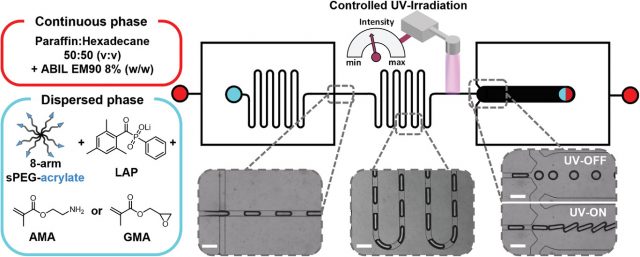
Functionalized Microgel Rods Interlinked into Soft Macroporous Structures for 3D Cell Culture
1 Introduction To understand interactions between living matter and artificial materials, tissue engineering research groups focus on the development of 3D scaffolds with increasingly controllable properties, reaching from biochemical interactions at molecular scale to nanoscale hydrogel networks, micrometer-scale pores, and macroscopic architectures.[1] Soft hydrogel scaffolds are conventionally formed by crosslinking a precursor solution, resulting in soft, [...]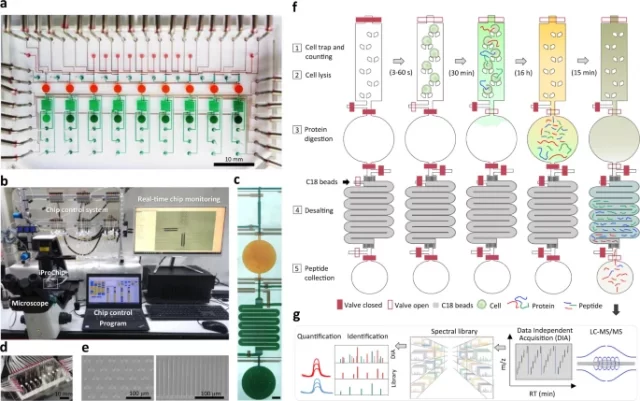
Streamlined single-cell proteomics by an integrated microfluidic chip and data-independent acquisition mass spectrometry
Abstract Single-cell proteomics can reveal cellular phenotypic heterogeneity and cell-specific functional networks underlying biological processes. Here, we present a streamlined workflow combining microfluidic chips for all-in-one proteomic sample preparation and data-independent acquisition (DIA) mass spectrometry (MS) for proteomic analysis down to the single-cell level. The proteomics chips enable multiplexed and automated cell isolation/counting/imaging and sample [...]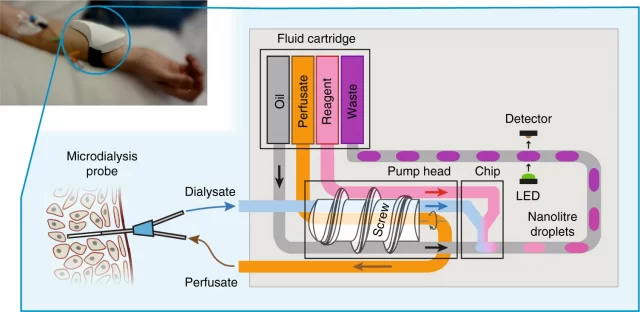
Monitoring biomolecule concentrations in tissue using a wearable droplet microfluidic-based sensor
Abstract Knowing how biomarker levels vary within biological fluids over time can produce valuable insight into tissue physiology and pathology, and could inform personalised clinical treatment. We describe here a wearable sensor for monitoring biomolecule levels that combines continuous fluid sampling with in situ analysis using wet-chemical assays (with the specific assay interchangeable depending on the target [...]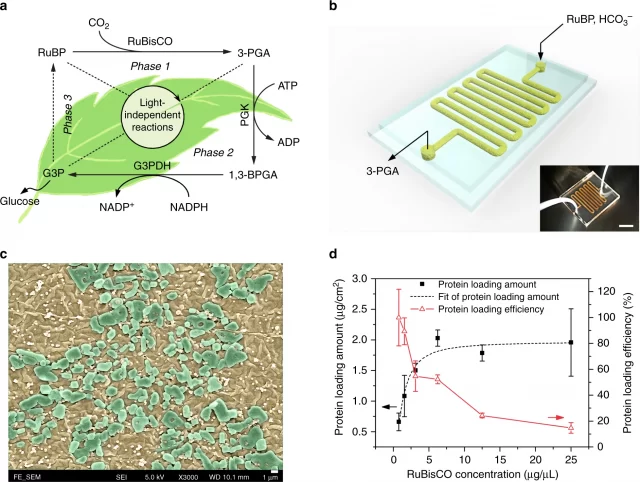
Continuous artificial synthesis of glucose precursor using enzyme-immobilized microfluidic reactors
Introduction The world is moving rapidly into food crisis due to extreme weather, shortage of farmland, and population explosion. And glucose is the basic material of food produced by green plants using the natural photosynthesis (NPS)1. However, the NPS suffers from low-energy efficiency (~1%) and is greatly limited by soil, climate, water, and labor2,3. It [...]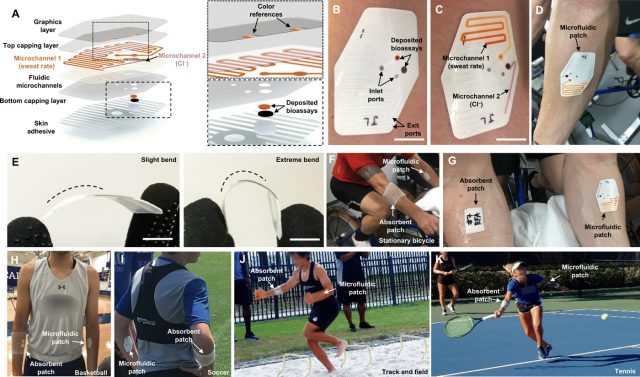
Skin-interfaced microfluidic system with personalized sweating rate and sweat chloride analytics for sports science applications
Soft wearable microfluidic patch design and sensing strategies The wearable microfluidic patch technology introduced here involves multilayered stacks of thin-film polymers that contain intricate microfluidic channels created using laser and die cutting techniques. The network of microchannels and assay wells are created using roll-to-roll processing of polymeric rolls of materials, allowing for rapid (~1000 patches/min) [...]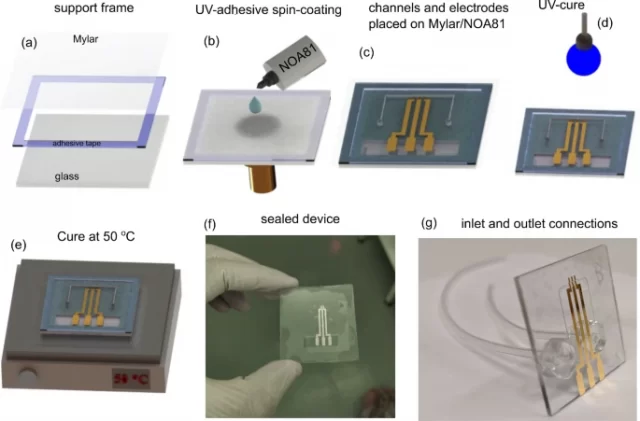
Development of a sticker sealed microfluidic device for in situ analytical measurements using synchrotron radiation
Microfluidic devices operate with small amounts of samples through micrometer and/or sub-micrometer channels1. As the main characteristics, these devices show reduced size, low weight, and high throughput.
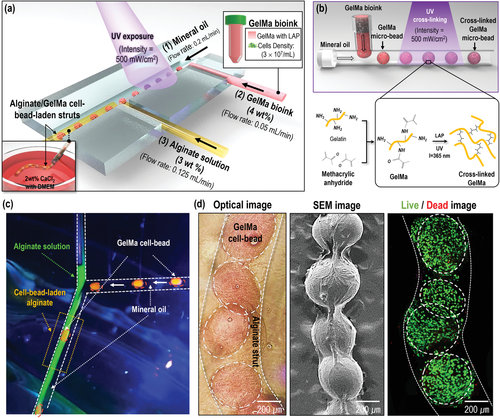
A Microfluidic Device to Fabricate One-Step Cell Bead-Laden Hydrogel Struts for Tissue Engineering
In the microfluidic device, homogeneous cell-laden beads were generating by manipulating the flow rates of continuously flowing oil and cell-loaded GelMa bioink.
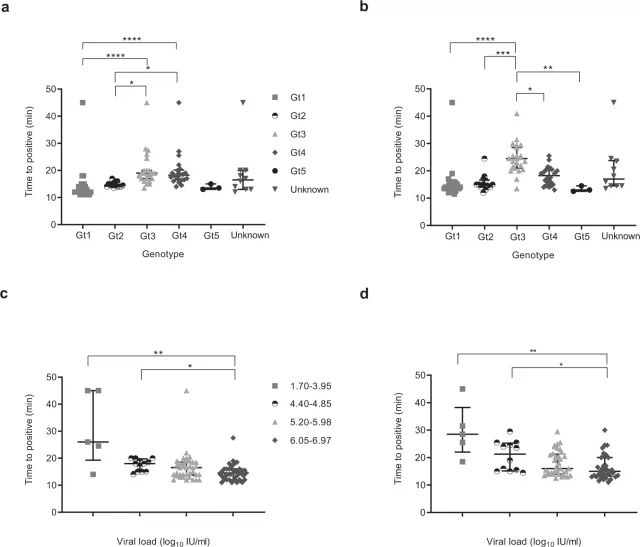
Paper microfluidic implementation of loop mediated isothermal amplification for early diagnosis of hepatitis C virus
The early diagnosis of active hepatitis C virus (HCV) infection remains a significant barrier to the treatment of the disease and to preventing the associated significant morbidity and mortality seen, worldwide.
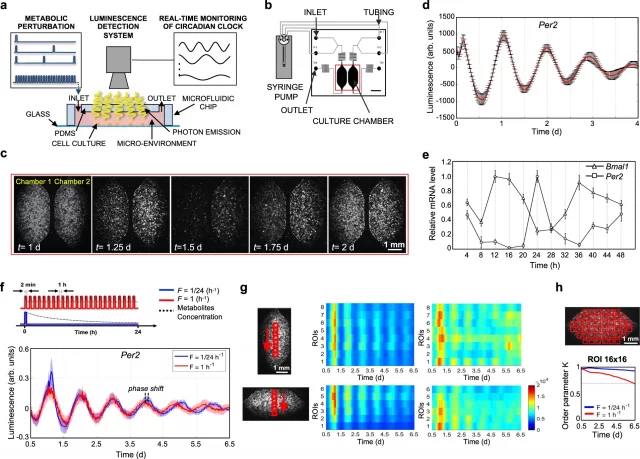
Microfluidic technology for circadian studies
We designed and developed a microfluidic platform (Supplementary Fig. S7) to perform frequency-encoded metabolic perturbations, while recording circadian gene expression by luminescence detectors.





